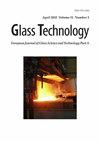AI Based Real-Time Weather Condition Prediction with Optimized Agricultural Resources
IF 0.5
4区 材料科学
Q4 MATERIALS SCIENCE, CERAMICS
Glass Technology-European Journal of Glass Science and Technology Part a
Pub Date : 2023-06-12
DOI:10.47672/ejt.1496
引用次数: 0
Abstract
Purpose: Unpredictable and rapid change in weather patterns has great impact on agricultural activities, especially for precision agriculture that results in worsened water resources availability, decreased soil fertility, use of pesticide as well as decreased yield productivity. In attempt to alleviate these challenges, this study aims at developing a real-time weather and farm field data driven Artificial Intelligence (AI) and Internet of Things (IoT) system that analyze, manage and schedule irrigation and fertigation as well as enabling farmers to interact with their farms via Smart phone or PCs to optimize energy and water resources. Methodology: The system employs weather condition monitoring sensors such as atmospheric pressure, air temperature, air humidity and wind speed for collecting real-time farm field data and uses Fuzzy Inference System (FIS) to predict rainfall rate at farm area for 24 hours period. The system also gathers field data such as soil moisture content and soil nutrient content and uses the Machine Learning (ML) algorithms to predict the time for irrigation and fertigation. By combining weather and farm field data, the system schedules the irrigation and fertigation activity. In addition, the mobile application is developed for the farmers to interact, control and monitor the farming activities and the data is presented to the farmers in both graphical and numerical formats. Findings: The system prototype deployed and tested in the two hectors Maize farm proved that 55% of water, 51% of energy and 20% of fertilizer were saved as well as increases in 20% of Maize yield production compared to previous season. Recommendations: Since the current irrigation and fertigation practices are based on predetermined time of the day and threshold values for automatic irrigation, this solution introduced the new concept of real-time and short-term weather forecasting that enables farmers to balance the irrigation period and weather pattern for water and fertilizer resources optimization.基于人工智能的农业资源优化实时天气预报
目的:不可预测和快速变化的天气模式对农业活动产生重大影响,特别是对精准农业,导致水资源可用性恶化,土壤肥力下降,农药使用以及产量生产力下降。为了缓解这些挑战,本研究旨在开发一种实时天气和农田数据驱动的人工智能(AI)和物联网(IoT)系统,该系统可以分析、管理和调度灌溉和施肥,并使农民能够通过智能手机或个人电脑与农场互动,以优化能源和水资源。方法:系统采用气压、气温、空气湿度、风速等气象监测传感器实时采集农田数据,并利用模糊推理系统(FIS)预测农田24小时内的降雨量。该系统还收集土壤水分含量和土壤养分含量等田间数据,并使用机器学习(ML)算法来预测灌溉和施肥的时间。通过结合天气和农田数据,该系统安排灌溉和施肥活动。此外,还为农民开发了移动应用程序,用于交互、控制和监控农业活动,并以图形和数字格式向农民提供数据。结果:在两公顷玉米农场部署和测试的系统原型证明,与上一季相比,节约了55%的水、51%的能源和20%的肥料,玉米产量增加了20%。建议:由于目前的灌溉和施肥实践是基于一天中预定的时间和自动灌溉的阈值,该解决方案引入了实时和短期天气预报的新概念,使农民能够平衡灌溉周期和天气模式,以优化水肥资源。
本文章由计算机程序翻译,如有差异,请以英文原文为准。
求助全文
约1分钟内获得全文
求助全文
来源期刊
CiteScore
0.30
自引率
0.00%
发文量
0
审稿时长
>12 weeks
期刊介绍:
The Journal of the Society of Glass Technology was published between 1917 and 1959. There were four or six issues per year depending on economic circumstances of the Society and the country. Each issue contains Proceedings, Transactions, Abstracts, News and Reviews, and Advertisements, all thesesections were numbered separately. The bound volumes collected these pages into separate sections, dropping the adverts. There is a list of Council members and Officers of the Society and earlier volumes also had lists of personal and company members.
JSGT was divided into Part A Glass Technology and Part B Physics and Chemistry of Glasses in 1960.

 求助内容:
求助内容: 应助结果提醒方式:
应助结果提醒方式:


